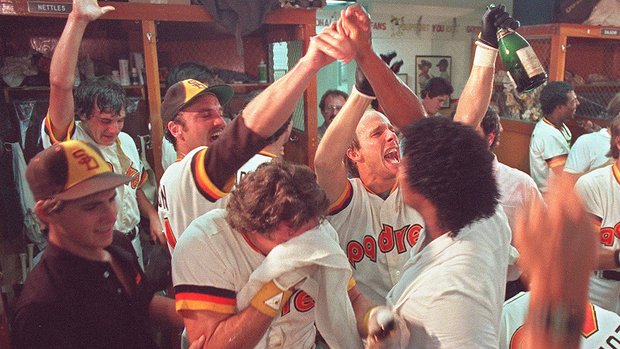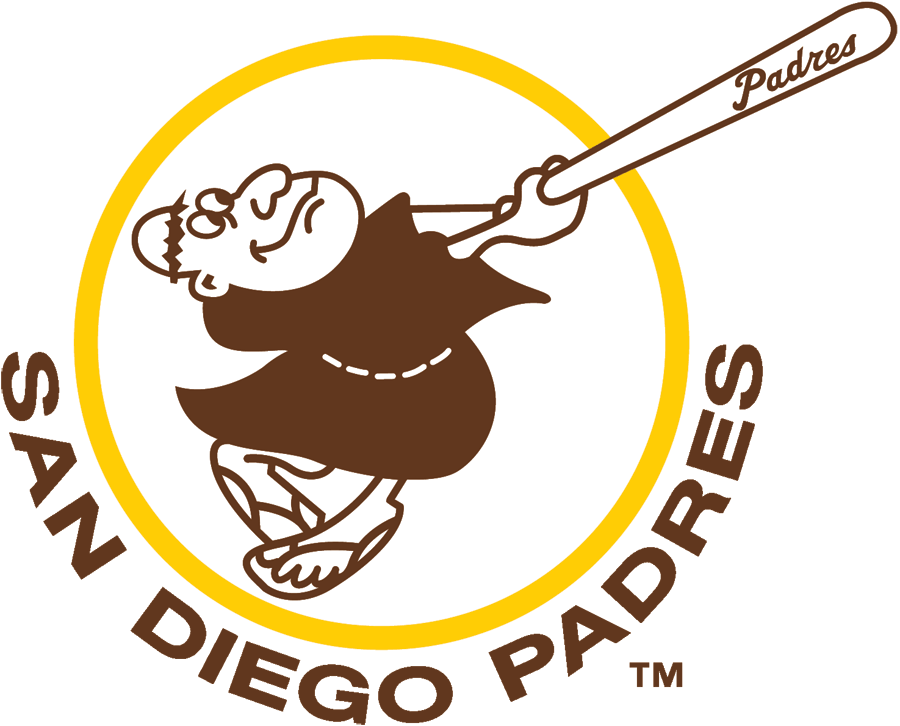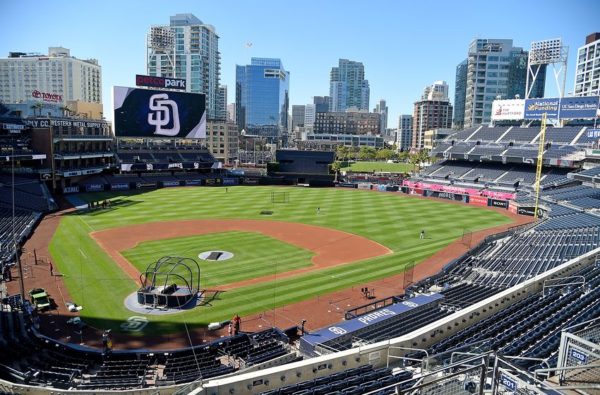Reasons to Give Thanks for the Padres

Credit: AP Photo

Despite the fact that the franchise has not been very successful, there are several reasons to give thanks for the San Diego Padres. On this Thanksgiving holiday, let’s explore some of the reasons why we love this organization from San Diego.
While Padres fans certainly can’t give thanks for World Series titles or star players beyond Tony Gwynn and Trevor Hoffman, we can find reasons to give thanks. After all, the San Diego Padres are the last major league sports team in the county. Others, including most recently the Chargers, have bolted for supposedly more fertile fields.
So let us take a look at the positives surrounding the home team as we get ready for the Thanksgiving holiday.
The Padres’ very existence
Thanks to Major League Baseball’s expansion, the Padres joined the National League in 1969. On April 8, Dick Selma pitched the first big league baseball game in San Diego history, going nine innings, giving up one run and two walks, in a 2-1 victory over the Houston Astros.
C. Arnholdt Smith, a businessman, and close friend of Richard (“I-am-not-a-crook”) Nixon had owned the PCL Padres, and MLB awarded him the local franchise. The team had a losing record for the first six seasons. However, baseball had come to San Diego and, by some miracle, remains here.
Smith actually had plans to sell the team to an owner intent on bringing baseball to Washington, D.C., but fate intervened. In 1979 Smith was actually convicted of embezzling $8.9 million as well as tax fraud. He served eight months, but his sentence was reduced due to health problems.
Ray and Joan Kroc
Enter Ray Kroc, the founder of the fast food franchise McDonald’s. After retiring from the hamburger business Kroc searched around for a new gig about the time Smith decided to sell the team.

Kroc stepped in and literally saved baseball in San Diego. In his first year, the Padres lost 102 games. However, over a million fans flocked to what later became Qualcomm Stadium to watch some pretty bad baseball. When baseball became too frustrating, Kroc handed the reigns over to his son-in-law Ballard Smith.
After the death of her husband in 1984, Joan Kroc actually offered to give the team to the city. However, MLB rules forbid such an arrangement. That year the Padres made it to the first of the team’s of two visits to the World Series. Kroc sold the team in 1990 and became one of the philanthropic leaders in the county.
1998 and Petco Park
The new ownership group consisted of television producer Tom Werner and a cast of thousands (actually 14). The group lasted from 1990 to 1994 when John Moores acquired 80 percent ownership. The Werner group’s most memorable “accomplishment” was Roseanne Barr’s embarrassing attempt to sing the National Anthem.
Moores wisely brought in Larry Lucchino as team president, and he helped change Padres history. Lucchino installed Bruce Bochy as manager and promoted Kevin Towers to general manager. Four years later, the Padres made their second appearance in the World Series. Unfortunately, the series ended quickly thanks to one of the best teams in the history of the sport, the 1998 New York Yankees.

The playoffs may have ended with a whimper rather than a bang, but Padres fans who experienced the atmosphere in the Q will never forget (and probably still suffer from hearing loss caused by the deafening cheers rocking the joint). A mid-market franchise managed to put together a team that had it all: pitching, both starting and relief; power and situational hitting; first-class defense, and an indomitable spirit.
Were it not for that season, Petco Park wouldn’t have made it to the drafting table. Lucchino had the vision, and, buoyed by the exciting trip through the playoffs against seemingly impossible odds, San Diego voters actually approved the expenditure for a downtown ballpark that year. What are the odds Petco Park would be approved by voters in the current political climate when San Diegans turn down convention centers funded by out-of-town visitors?
Thanks to that 1998 season, it’s not impossible to dream that San Diego could again host a raucous crowd and a team on the brink of a championship.
A current ownership group with sufficient funds and a baseball pedigree
The current ownership group actually had sufficient funds to buy the team, unlike the last one led by Jeff Moorad. He planned to buy the team on the installment plan from John and Becky Moores. Their marriage had gone belly up thanks to his extra-curricular activities, and they needed to divide up the proceeds from the sale of the team. From February 2009 until MLB owners refused to approve the sale to Moorad’s group in March 2012, the organization remained in limbo.
At that point, a new ownership group that includes Kevin and Brian O’Malley, Peter and Tom Seidler, as well as local businessman Ron Fowler, stepped forward. This group shows every sign of a commitment to building a competitive organization, to say nothing of staying out of jail.
These Seidlers and O’Malleys spring from the family tree of Walter and Peter O’Malley. Walter O’Malley, the owner of the Brooklyn Dodgers, helped bring major league baseball out west in 1958. His son Peter carried on the family stewardship of the relocated franchise beginning in 1970. Collectively they have deep pockets in addition to their baseball DNA. The Padres will never compete financially with the biggest spenders, but thanks to the revenue streams from MLB as well as the current owners’ wealth, the team should have the ability to field a competitive team in the future.

Fowler, an owner who doubles as the first fan, probably shouldn’t be the go-to voice of the Padres, because his tongue lacks a governor. However, he is bluntly honest and obviously shares both the passion and the general angst of many other longtime fans.
A Plan
Of course, money alone does not guarantee success. For the first time in a very long time though, the front office has a plan and a general manager in A.J. Preller that owners trust to carry out the plan. During his tenure, Preller has run afoul of MLB rules and set the team back with his frenzy of trades early in his tenure. But, with the help of losing seasons and high draft picks, he has created the highest rated farm system in all of baseball.
Of course, the Padres’ plan is predicated on the success of the team’s draftees, as well as the judicious addition of veteran players. The farm system is loaded with pitching, and this year’s playoffs again demonstrated the importance of ace-quality starting pitchers.
The next couple of years will reveal the ultimate success of the Padres’ plan, but fans can be thankful that the team finally has owners and a front office with the will and the means to bring success to the last major league franchise standing in San Diego.
Baseball has been a part of Diane’s life since her father played professionally (mostly at the minor league level). She has written for a number of publications and concentrated on companion animal welfare. She welcomes the opportunity to write about the sport she loves. Diane shares her home with her husband and a house full of rescued animals.